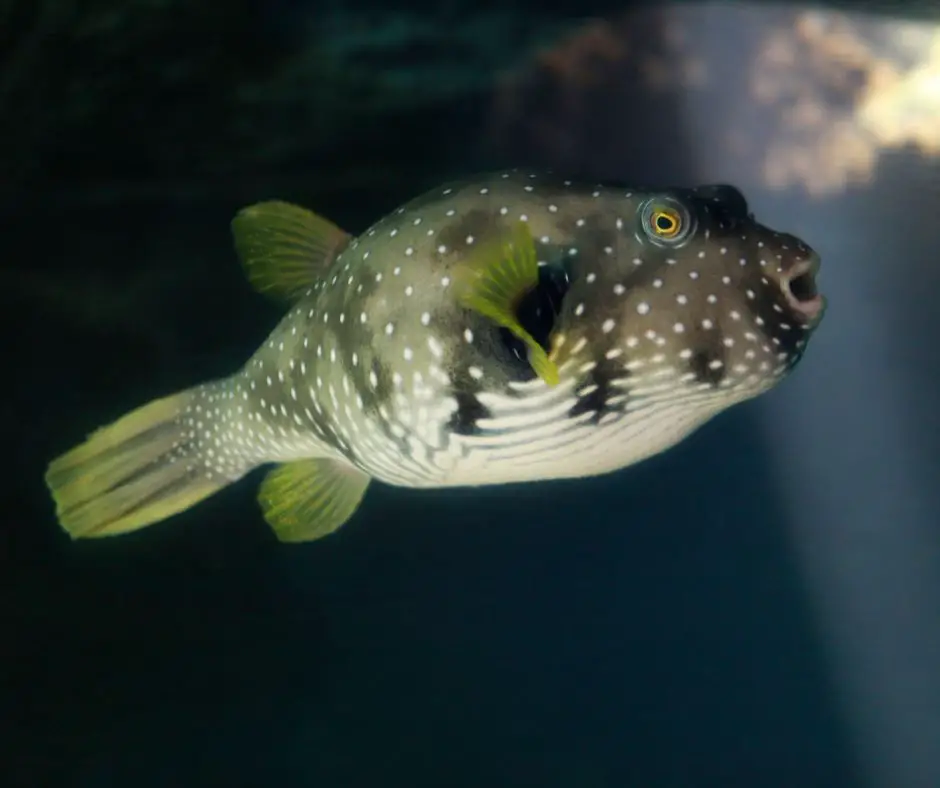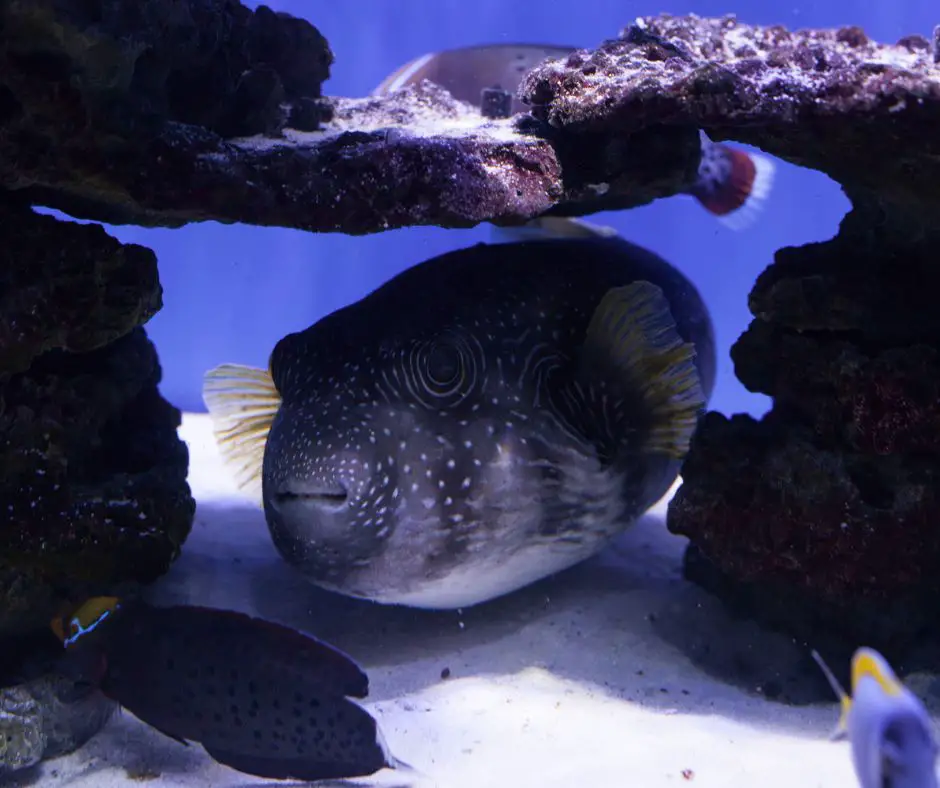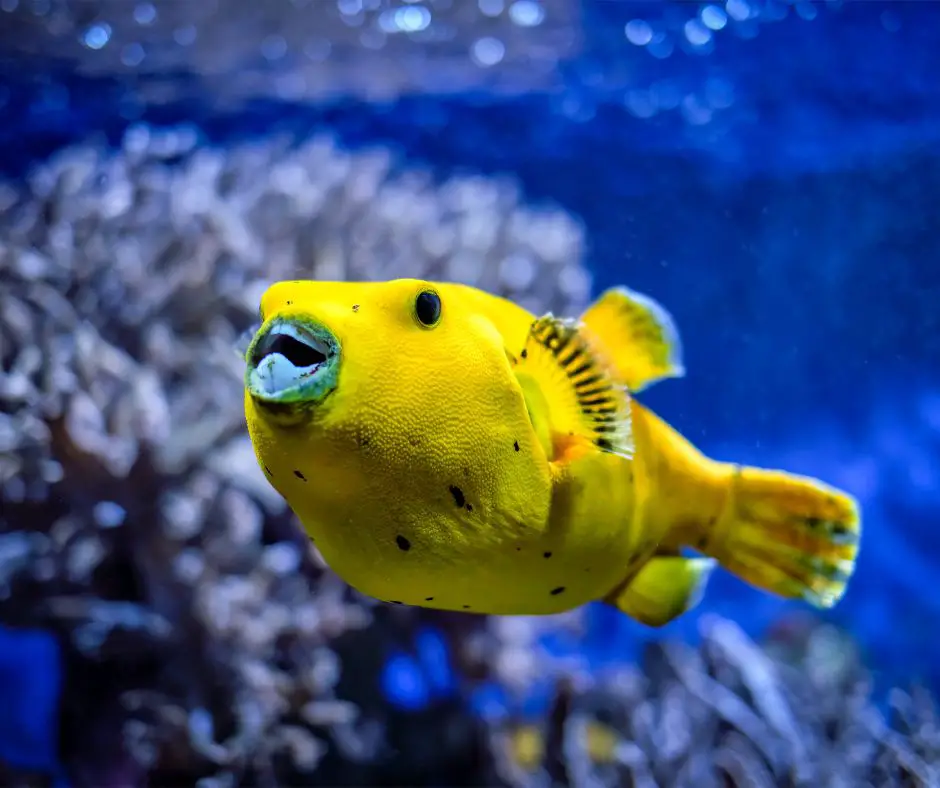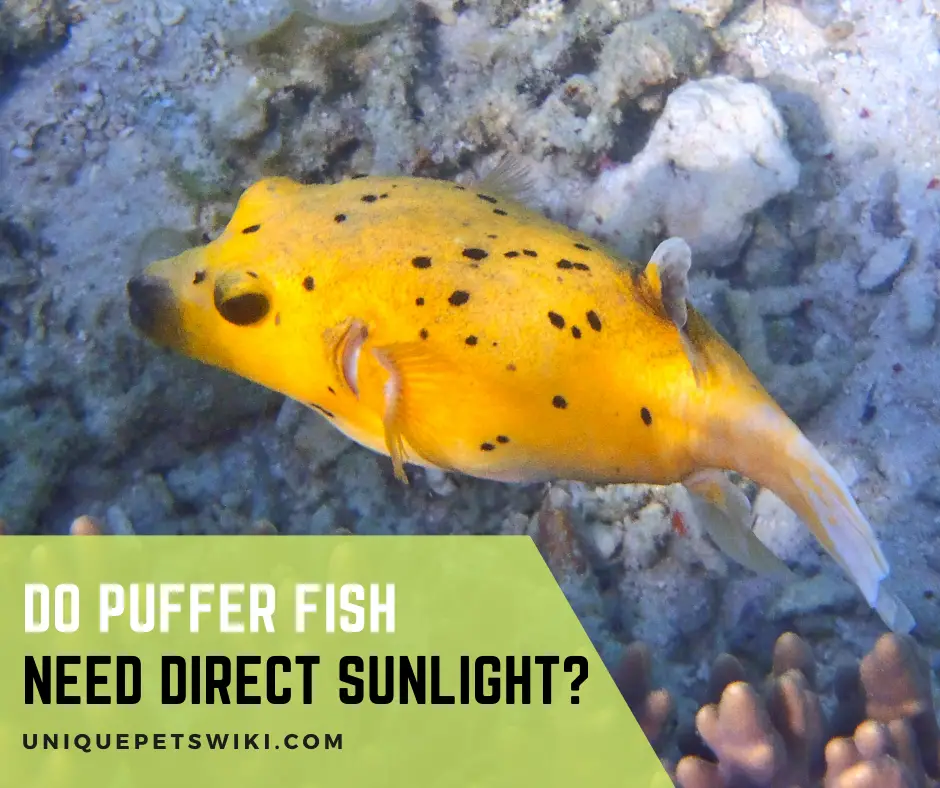Most fish need light to grow and thrive. The question many puffer fish owners have on their minds is ‘do puffer fish need direct sunlight?’
Natural sunlight is great for most species of fish but direct sunlight could also harm fish by causing algae to grow rapidly in their tanks.
In this guide, we’ll discuss whether puffer fish need direct sunlight and how to light your puffer’s tank to keep it healthy.
Contents
Do Puffer Fish Need Direct Sunlight?
Pufferfish need light but not direct sunlight. They are tropical fish and, as such, live in warm waters. So, they do require light for getting vitamin D.
However, too much light – especially direct sunlight – could topple the delicate balance of a puffer fish’s tank and these creatures are very sensitive to even the smallest of environmental changes.
Here are the reasons why pufferfish need light but not direct sunlight:
Reasons Why Puffer Fish Don’t Need Direct Sunlight

Could heat the water rapidly: Direct sunlight can increase the water temperature of the pufferfish tank and harm your fish. Most pufferfish species require water temperature between 72 and 78 F.
Causes algae to grow rapidly: While direct sunlight is beneficial for aquarium plants to flourish, it also encourages algae to grow rapidly which can be harmful to your pet.
Algae reduce beneficial bacteria in the tank, make the water cloudy and dirty, and even cause spikes in ammonia levels. Moreover, algae tend to reduce the available oxygen in the water which your pufferfish need to survive.
Pufferfish natural habitat: When you keep any species of fish in an aquarium, you should try to closely mimic its natural habitat as far as possible.
The natural habitat of a pufferfish is tropical or subtropical waters. Most species are found at a depth of 30 m. Species like Map Pufferfish (Arothron mappa) are found in tropical and subtropical waters in coral reefs present at 33 ft depth. Other species like Northern Puffers can be found at 10–183 m (33–600 ft). This is the area of the ocean where plants can grow and pufferfish need those plants to hide and thrive.
Sunlight can penetrate the ocean only to a depth of 1000 m only under the right conditions. In fact, you mostly won’t find significant light beyond 200 m (656 ft).
So it may be better to provide indirect or diffused light to your pufferfish.
Lighting Requirements for Pufferfish Tank

Most pufferfish are happy with standard aquarium lighting but you must make sure there is adequate light. Lack of light can cause many health issues and stress in puffers. Therefore, lighting is an essential aspect of aquarium setup so you must pay careful attention to it.
Here are some tips to get aquarium lighting right for your pufferfish:
Create a dappled effect – As explained above, pufferfish typically get diffused sunlight in their natural habitats. The coral reefs and marine plants provide them with adequate shade from direct sunlight. To create a dapple effect in the tank, provide some floating plants that can break the direct sunlight.
Avoid bright lights – Bright lights can startle your fish and even increase their stress and aggression. Look for lights that can be programmed to follow the natural circadian rhythm of the fish. They should brighten and dim slowly and just as natural light does in the fish’s habitat. These days, you get special aquarium lights with a dawn effect.
Chihiros Wrgb2 Pro (Built-in Bluetooth)37w 3260lm Mobile app Control Sunrise
- Perfect choice for high-tech aquariums, even with the most demanding plants. With the help of the built-in Bluetooth controller and the My Chihiros application you can change the color and brightness of the light to your liking so you can easily achieve the perfect look for your own taste. You can even set sunrise and sunset with a few clicks in the app which is not only cool but also better for your fish than suddenly turning the light on or off.
- Mobile app control, simulate sunrise and sunset.
- New products in 2022.
- 40% higher power than WRGB II.
- Added white channel control.
Last update on 2022-12-29 / Affiliate links / Images from Amazon Product Advertising API
Try lighting the room instead of the tank – The room lights can create a diffused light effect – so if you don’t have programmable aquarium lights, you can room lights for a few minutes before turning on the tank’s lights. This will help your pufferfish acclimatize slowly instead of facing sudden brightness.

Study your species carefully – the exact amount of light a pufferfish needs could vary from species to species. Some puffers like the Fahaka thrive with 4 hours of light daily. Others like Green Spotted Puffers love to get 7-11 hours of light daily.
Puffer Fish Tank Requirements
Pufferfish need certain tank conditions without which, they could get stressed or suffer from diseases. While these parameters and conditions will differ from species to species, most puffers could use the following requirements in their tanks:
- Substrate – Puffers prefer sand as a substrate. It could be fine sand or even crushed coral.
- Water – The temperature of water ideally should be between 72-78 F – you may use a thermometer along with a water heater if you live in a cold climate to maintain this range. Water hardness for species such as dwarf pea puffer is between 5-15 kH and hardness is 7 to 8. Research your pufferfish species as these conditions can differ for various species.
- Filter – a hang-on-the back or canister filter is ideal for most puffers as these give adequate water flow.
- Hiding/rest areas – Add driftwood, overhangs, decorations, a wide selection of plants, caves, rocky enclaves, etc. to provide your pet with adequate areas to hide, or rest.
- LED lights – These are reliable means of lighting a fish tank. They last long, consume less power and are generally considered much more reliable than fluorescent and other tank lights.
Current USA Orbit Marine LED Aquarium Light
- BRIGHTER, MORE COLORS- Your aquarium is full of spectacular colors, why not bring them all to life. Introducing the new Orbit Marine LED. Now packed with even more ultra-bright LEDs in a far wider color spectrum, it will make your corals and fish look even more spectacular. And it’s now in the LOOP, providing both light and pump control, taking your aquarium experience to a whole new level.
- SUPER COLOR- Producing eye-popping color rendition and brilliant shimmer effects, the Orbit Marine produces a limitless number of color spectrums. A higher ratio of actinic blue spectrum LEDs balanced with full spectrum creates the perfect color combination for fish, inverts, live rock and corals to fluoresce and look amazing. Wide angle dispersion lenses evenly spread light over your entire tank while ensuring superior color blending.
- MULTIPLE MODES- With modes that dim periodically to create cloud cover effects, storm modes that will blow you away complete with lightning strikes and innovative evening modes that include lunar and dusk – it’s sure to add excitement and intrigue to any aquarium.
- EASY INSTALLATION- Extendable brakets allows this LED light to fit most aquairum fish tanks 18-24 inches wide.
- REALISTIC EFFECTS- From start-up to sundown, the Orbit Marine gradually mimics the effect of a slow sunrise, bright daylight, dimming sunset and moonlight. Built-in lighting programs create a 24-hour natural biorhythmic lighting cycle, while on-demand dynamic weather effects gently roll clouds across your reef.
Last update on 2022-12-29 / Affiliate links / Images from Amazon Product Advertising API
FAQs
Do dwarf puffers like light?
Dwarf puffers prefer diffused lights as bright lights could startle or stress them out.
What temperature does a pufferfish need?
Most species of puffers prefer water temperatures between 72 and 78 F.
Is it hard to care for puffer fish?
Pufferfish are not the best pets for novice fish keepers as they need stringent water conditions. But once you get a hang of how to maintain these tank conditions, keeping a puffer fish can be very rewarding.
Do puffer fish need a heater?
Pufferfish will need a heater if you live in a cold climate or if the tank’s water temperature drops below 70 F or if you have air conditioning.
Conclusion – Do Puffer Fish Need Direct Sunlight
Pufferfish need light for getting vitamin D but they should not get direct sunlight. Direct sunlight could stress your fish, heat up the water, and even lead to algae blooms. Algae could reduce the oxygen in the tank and even cause ammonia spikes. Therefore, diffused or dappled light is the best choice for most species of pufferfish and you can provide this through LED lighting or special programmable aquarium lighting.


